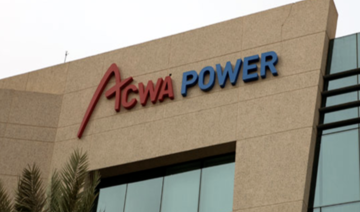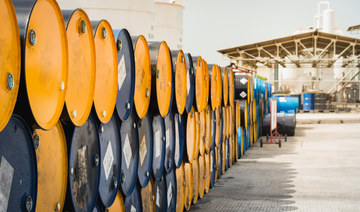WASHINGTON: US job growth slowed in August, but the unemployment rate dropped to a near 7-1/2-year low and wages accelerated, keeping alive prospects of a Federal Reserve interest rate hike later this month.
Nonfarm payrolls increased 173,000 last month after an upwardly revised gain of 245,000 in July, the Labor Department said on Friday. August’s gain was the smallest in five months as the factory sector lost the most jobs since July 2013.
The jobs count, however, may have been tarnished by a statistical fluke that has often led to sharp upward revisions to payroll figures for August after initial weak readings.
Indicating the hiring slowdown was likely not reflective of the economy’s true health, the jobless rate fell two-tenths of a point to 5.1 percent, its lowest level since April 2008.
In addition, payrolls data for June and July were revised to show 44,000 more jobs created than previously reported, and average hourly earnings increased 8 cents, the biggest rise since January. The length of the average workweek also expanded.
“The payrolls data is certainly good enough to allow for a Fed rate hike in September,” said Alan Ruskin, global head of currency strategy at Deutsche Bank in New York.
“The big question is still whether financial market volatility will scupper the plans.”
Investors seemed to agree. US stocks, which could be pressured by higher rates, opened lower, while yields on US government debt rose.
The value of the dollar also moved higher against a broad basket of currencies.
While the mixed report did little to alter views that the US economy remains vibrant despite volatile global financial markets and slowing Chinese growth, it could further complicate the Fed’s decision at a policy meeting on Sept. 16-17.
In the wake of a recent global equities sell-off, financial markets significantly scaled back bets on a September rate hike over the past month.
But Fed Vice Chairman Stanley Fischer told CNBC last week it was too early to decide whether the stock market rout had made an increase less compelling.
“With this jobs report ... the Federal Reserve finds itself in a real uncertainty jam,” said Mohamed El-Erian, chief economic adviser at Allianz in Newport Beach, California.
MISSING FORECASTS
Economists in a Reuters survey had forecast nonfarm payrolls increasing by 220,000 last month, but they had also warned that the model used to smooth the data for seasonal fluctuations is often thrown off at the start of a new school year.
They said the data could be further muddied because of a typically low response rate from employers to the government’s payroll surveys in August.
But the evidence of a tightening labor market added to a string of upbeat data, including figures on automobile sales and housing, that has suggested the economy was moving ahead with strong momentum after growing at a robust 3.7 percent annual rate in the second quarter.
The decline in the unemployment rate brought it into the range that most Fed officials think is consistent with a low but steady rate of inflation, and would likely bolster their expectation that a pick-up in wages will help lift inflation toward their 2 percent target.
A broad measure of joblessness that includes people who want to work but have given up searching and those working part-time because they cannot find full-time employment fell to 10.3 percent, the lowest level since June 2008.
In August, construction payrolls rose 3,000 on top of the 7,000 jobs added in July. Mining and logging employment fell by 10,000 jobs last month.
Manufacturing payrolls slid 17,000, despite robust demand for autos.
The increase in hourly earnings left them 2.2 percent above their year-ago level, still well below the 3.5 percent growth rate economists consider healthy. Some analysts think earnings are being held back by falling wages in oil field services.
But a tighter labor market and decisions by several state and local governments to raise the minimum wage should eventually translate into faster earnings growth.
A number of retailers, including Walmart, Target and TJX Cos, have increased pay for hourly workers since the start of the year.
US labor market shows some muscle despite slower job growth
US labor market shows some muscle despite slower job growth

ACWA Power signs $1.51bn senior debt financing agreement for Qassim 1 Power Plant
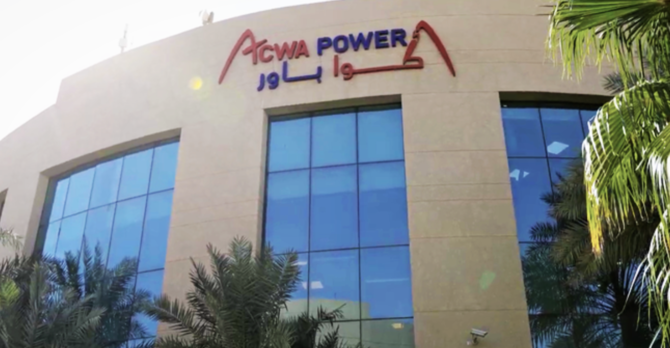
RIYADH: Saudi utility firm ACWA Power has signed a senior debt financing agreement for the Qassim 1 Combined Cycle Power Plant for SR5.69 billion ($1.51 billion).
The deal, signed through Qudra One for Electricity Co., will extend for 28 years, according to ACWA Power’s statement to Tadawul.
International and local commercial lenders, including Standard Chartered Bank, Bank of China, and Riyad Bank, as well as Saudi National Bank, Alinma Bank, Saudi Investment Bank, and Saudi Awwal Bank, financed the senior debt.
Abu Dhabi’s ADQ lists debut $2.5bn bonds on London Stock Exchange
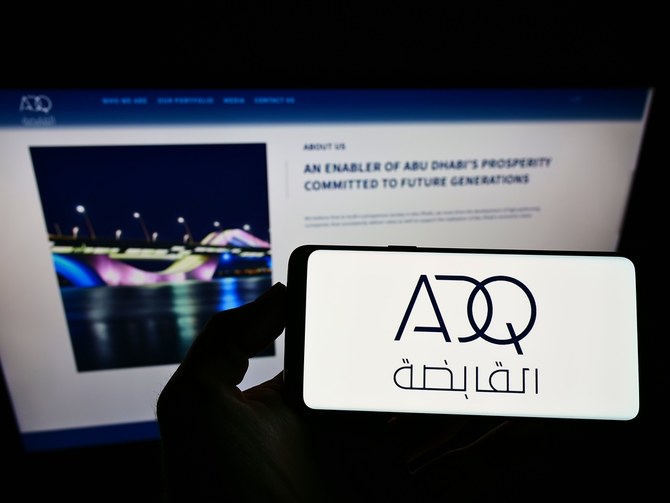
The smallest of three Abu Dhabi sovereign wealth funds ADQ has listed a dual tranche $2.5 billion bond on the London Stock Exchange, the fund said in a statement.
The fund sold a $1.25 billion five-year portion at 80 basis points over US Treasuries and another $1.25 billion 10-year tranche at 90 bps over the same benchmark, fixed income news service IFR reported.
Citigroup, Credit Agricole, First Abu Dhabi Bank, Goldman Sachs International, HSBC and Standard Chartered were joint global coordinators and active bookrunners on the bond issuance deal.
The proceeds from the debt sale, which was oversubscribed more than 4.4 times, will diversify ADQ’s funding mix, enhance financial resilience and contribute growth capital.
US Fed leaves rates unchanged, flags ‘lack of further progress’ on inflation
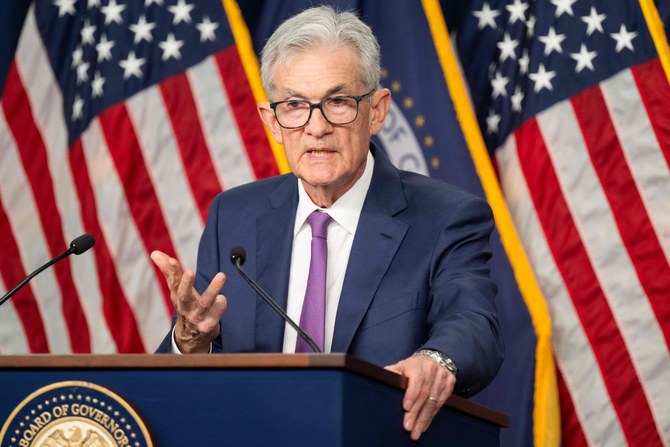
- Policy rate remains in 5.25 percent-5.50 percent range
- Fed policymakers concerned by recent inflation data
- Markets take ‘dovish’ view of Fed chief’s remarks
WASHINGTON : The US Federal Reserve held interest rates steady on Wednesday and signaled it is still leaning toward eventual reductions in borrowing costs, but put a red flag on recent disappointing inflation readings that could make those rate cuts a while in coming, Reuters reported.
Indeed, Fed Chair Jerome Powell said that after starting 2024 with three months of faster-than-expected price increases, it “will take longer than previously expected” for policymakers to become comfortable that inflation will resume the decline toward 2 percent that had cheered them through much of last year.
That steady progress has stalled for now, and while Powell said rate increases remained unlikely, he set the stage for a potentially extended hold of the benchmark policy rate in the 5.25 percent-5.5 percent range that has been in place since July.
US central bankers still believe the current policy rate is putting enough pressure on economic activity to bring inflation under control, Powell said, and they would be content to wait as long as needed for that to become apparent — even if inflation is simply “moving sideways” in the meantime.
The Fed’s preferred inflation measure — the personal consumption expenditures price index — increased at a 2.7 percent annual rate in March, an acceleration from the prior month.
“Inflation is still too high,” Powell said in a press conference after the end of the Federal Open Market Committee’s two-day policy meeting. “Further progress in bringing it down is not assured and the path forward is uncertain.”
Powell said his forecast remained for inflation to fall over the course of the year, but that “my confidence in that is lower than it was.”
Whether there are rate cuts this year or not remains in doubt.
“If we did have a path where inflation proves more persistent than expected, and where the labor market remains strong but inflation is moving sideways and we’re not gaining greater confidence, well, that would be a case in which it could be appropriate to hold off on rate cuts,” Powell said. “There are paths to not cutting and there are paths to cutting. It’s really going to depend on the data.”
Despite the uncertainty of the current economic moment, Powell’s characterization of rate hikes as “unlikely” cheered investors concerned about a newly hawkish Fed chief.
US stock and bond prices turned higher as Powell preached patience that may delay rate cuts, but also means a high bar for any more hikes. The Fed raised its benchmark policy rate by 5.25 percentage points in 2022 and 2023 to curb a surge in inflation.
Powell’s remarks on Wednesday were “notably less hawkish than many feared,” said analysts at Evercore ISI. “The basic message was that cuts have been delayed, not derailed.”
Investors in contracts tied to the Fed’s policy rate increased bets that rate cuts could begin in September rather than later in the year as reflected in earlier market pricing.
Balance Sheet
The Fed’s latest policy statement kept key elements of its economic assessment and policy guidance intact, noting that “inflation has eased” over the past year, and framing its discussion of interest rates around the conditions under which borrowing costs can be lowered.
“The Committee does not expect it will be appropriate to reduce the target range until it has gained greater confidence that inflation is moving sustainably toward 2 percent,” the Fed repeated in its unanimously-approved statement.
That continues to leave the timing of any rate cut in doubt, and Fed officials made emphatic their concern that the first months of 2024 have done little to help the cause.
“In recent months, there has been a lack of further progress toward the Committee’s 2 percent inflation objective,” the Fed said in its statement.
The US central bank also announced it will scale back the pace at which it is shrinking its balance sheet starting on June 1, allowing only $25 billion in Treasury bonds to run off each month versus the current $60 billion. Mortgage-backed securities will continue to run off by up to $35 billion monthly.
The step is meant to ensure the financial system does not run short of reserves, as happened in 2019 during the Fed’s last round of “quantitative tightening.”
While the move could loosen financial conditions at the margin at a time when the US central bank is trying to keep pressure on the economy, policymakers insist their balance sheet and interest rate tools serve different ends.
The Fed maintained its overall assessment of economic growth, saying that the economy “continued to expand at a solid pace. Job gains have remained strong and the unemployment rate has remained low.”
Powell reconciled that with the relatively weak, 1.6 percent growth of gross domestic product in the first quarter by saying that the 3.1 percent increase in private domestic demand was a better gauge of where the economy stands, with output buttressed by a recent jump in immigration.
Asked about the risk the US was entering a period of “stagflation” with stagnant growth and rising prices, Powell said current conditions are nothing like those seen in the late 1970s when prices were rising more than 10 percent annually at one point alongside high unemployment.
“Right now we have ... pretty solid growth ... We have inflation running under 3 percent,” Powell said, adding: “I don’t see the ‘stag’ and I don’t see the ‘flation,.’”
Oil Updates - prices rebound on hopes US will replenish strategic reserve

NEW DELHI: Oil prices rose on Thursday, rebounding from three days of losses, on expectations the lower levels may prompt the US, the world’s biggest crude consumer, to start replenishing its strategic reserve, putting a floor under prices, according to Reuters.
Still, prices fell more than 3 percent on Wednesday to a seven-week after the US Federal Reserve kept interest rates steady, which may curtail economic growth this year and limit oil demand increases.
Crude was also pressured by an unexpected increase in US crude inventories and signs of an impending Israel-Hamas ceasefire that would ease Middle East supply concerns.
Brent crude futures for July gained 58 cents, or 0.7 percent, to $84.02 a barrel by 9:33 a.m. Saudi time on Thursday. US West Texas Intermediate crude for June climbed 53 cents, or 0.7 percent, to $79.53 a barrel.
“The oil market was supported by speculation that if WTI falls below $79, the US will move to build up its strategic reserves,” said Hiroyuki Kikukawa, president of NS Trading, a unit of Nissan Securities.
The US has said it aims to replenish the Strategic Petroleum Reserve after a historic sale from the emergency stockpile in 2022 and wants to buy back oil at $79 a barrel or less.
In the Middle East, expectations grew that a ceasefire agreement between Israel and Hamas could be in sight following a renewed push led by Egypt.
Still, Israeli Prime Minister Benjamin Netanyahu has vowed to go ahead with a long-promised assault on the southern Gaza city of Rafah despite the US position and a UN warning that it would lead to “tragedy.”
“As the impact of the US crude stock-build and the Fed signalling higher-for-longer rates is close to being fully baked in, attention will turn toward the outcome of the Gaza talks,” said Vandana Hari, founder of oil market analysis provider Vanda Insights.
“As long as the latest bout of optimism over a ceasefire sustains, I expect a continued downside bias in crude,” Hari added.
The US Energy Information Administration said crude inventories rose by 7.3 million barrels to 460.9 million barrels in the week ended April 26, compared with analysts’ expectations in a Reuters poll for a 1.1 million-barrel draw.
Crude stocks were at the highest point since June, the EIA said.
The US Federal Reserve held interest rates steady on Wednesday and signalled it is still leaning toward eventual reductions in borrowing costs, but put a red flag on recent disappointing inflation readings.
Any delay in rate cuts could slow economic growth and dampen demand for oil.
Still, continuing supply reductions by the Organization of the Petroleum Exporting Countries and its allies, known as OPEC+, will support prices.
Analysts at Citi Research expects OPEC+ to hold output cuts through the second half of the year as it meets on June 1.
However, “if prices move to a bull case $90-100+ range, OPEC+ would likely ease cuts, providing a soft ceiling for oil,” they said in a note.
How AI will unlock billions of dollars in economic value for Saudi health sector

- AI and machine learning are revolutionizing patient outcomes and healthcare service efficiency
- Integration of AI in medical administration to revolutionize resource allocation, optimize hospital operations
RIYADH: Saudi Arabia’s health-tech sector is undergoing substantial transformation driven by artificial intelligence, promising significant economic and operational benefits.
A McKinsey & Co. analysis forecasts that by 2030 AI could unlock $15 to $27 billion in economic value for the Kingdom’s medical sector.
This can be achieved by automating up to 40 percent of healthcare tasks, enhancing efficiency and reducing manual workload.
Such advancements align with Saudi Arabia’s ambition to emerge as a regional technology hub, with the medical sector being a key division benefiting from this digital transition.
Crown Prince Mohammed bin Salman has highlighted the potential of this revolution, and is quoted as saying: “We are living in a time of scientific innovation, unprecedented technology, and unlimited growth prospects. These new technologies, such as artificial intelligence and the Internet of Things, if used optimally, can spare the world many disadvantages and can bring enormous benefits to the world.”
Time of transformation
In a recent interview with Arab News, Nadine Hachach-Haram, a surgeon and co-founder of the health-tech platform Proximie, shared her observations about the transformative applications of AI. She said this could be used for enhancing patient safety, communication, and service efficiency across Saudi Arabia’s healthcare sector.
“AI use allows the automation of necessary but time-consuming and tedious administrative processes,” Hachach-Haram said. “AI implementation will help minimize errors, optimize efficiency, revolutionize patient care, and improve global healthcare accessibility.”
She also underscored the government’s approach to fostering AI, including initiatives such as the National Data Bank and cloud infrastructure to support public and private sector collaboration.
Hachach-Haram explained that AI and machine learning are revolutionizing patient outcomes and healthcare service efficiency in the Kingdom as the nation embraces these technologies to align with the Saudi Health Sector Transformation Program.
This undertaking is a pivotal element of the Ministry of Health’s strategy under Vision 2030, which aims to enhance medical care access and modernize facilities to ensure the well-being of the populace.
Proximie, a global healthcare platform, is at the forefront of this shift, playing a critical role in the SEHA Virtual Hospital’s efforts to overcome geographical constraints, enhance patient safety, and facilitate the sharing of medical expertise across Saudi Arabia.
Hachach-Haram highlighted the use of AI in a medical setting. “The hospital utilizes AI to triage caseloads and employs the latest imaging technologies to aid in remote scan interpretations.”
This evidence demonstrates tangible benefits, with Proximie instrumental in supporting cardiology surgeries at regional hospitals, thereby minimizing the need for patient referrals and travel, Hachach-Haram said.
“The hospital has the capacity to treat over 400,000 patients a year. It uses AI to triage caseloads and makes the latest imaging technologies available to support the interpretation of scans remotely,” she added.
She shared a poignant illustration of this impact in the case of Noura Saleh, 70, from Tabuk, who required urgent surgery following stroke-induced heart failure.
The operation was successfully executed at a local hospital, with the SEHA Virtual Hospital’s cardiology team providing remote guidance through Proximie.
Hachach-Haram said: “It’s a great example of how distance is no longer an obstacle to receiving the best care promptly.”
Improved access and care
Speaking to Arab News, Rania Kadry, co-founder of the Egyptian health-tech platform Almouneer, shared her prediction of the Kingdom’s transformation over the next decade.
Kadry envisions AI significantly impacting medical diagnostics, treatment planning, and personalized medicine in Saudi Arabia.
“This will lead to improved patient outcomes, reduced healthcare costs, and enhanced efficiency in healthcare delivery,” she said.
She added that AI-driven telemedicine platforms and remote-monitoring systems are expected to become more prevalent, particularly in rural areas, increasing access to healthcare services nationwide.
“Moreover, AI will continue to be integrated into healthcare administration processes, optimizing resource allocation, and improving overall healthcare management,” she added.
Hachach-Haram addressed a crucial aspect of AI in healthcare: patient trust and data privacy. She acknowledges the apprehension many patients feel about the use of their health data. However, she believes that proper communication about the benefits of healthcare innovation and knowledge-sharing might encourage patients to become proactive proponents of AI.
“Many patients are understandably nervous about the use of their sensitive health data, but if the benefits of healthcare innovation and knowledge-sharing are clearly explained, patients may embrace becoming ambassadors about the benefits of using and sharing data — helping the entire ecosystem,” she said.
Furthermore, the integration of AI in healthcare administration is predicted to revolutionize resource allocation and optimize hospital operations.
Kadry added: “One example could be the widespread implementation of AI-powered predictive analytics systems in Saudi Arabian hospitals.” This would leverage patient data to forecast healthcare needs and enhance service delivery, she added.
Kadry also underscored the Kingdom’s commitment to health tech and AI innovation, referencing Saudi Arabia’s ambitious plan to allocate 2.5 percent of its gross domestic product, approximately $16 billion by 2040, to research and development, with a focus on aging and chronic diseases.
“Can you imagine how much the country will progress under the young and progressive leadership?” She highlighted the launch of the Hevolution Foundation, a $20 billion Saudi Arabia initiative dedicated to advancing human health and extending life expectancy globally.
Despite being in its early stages, the utilization of AI technology holds immense potential to positively influence patient outcomes across the Arab world.


